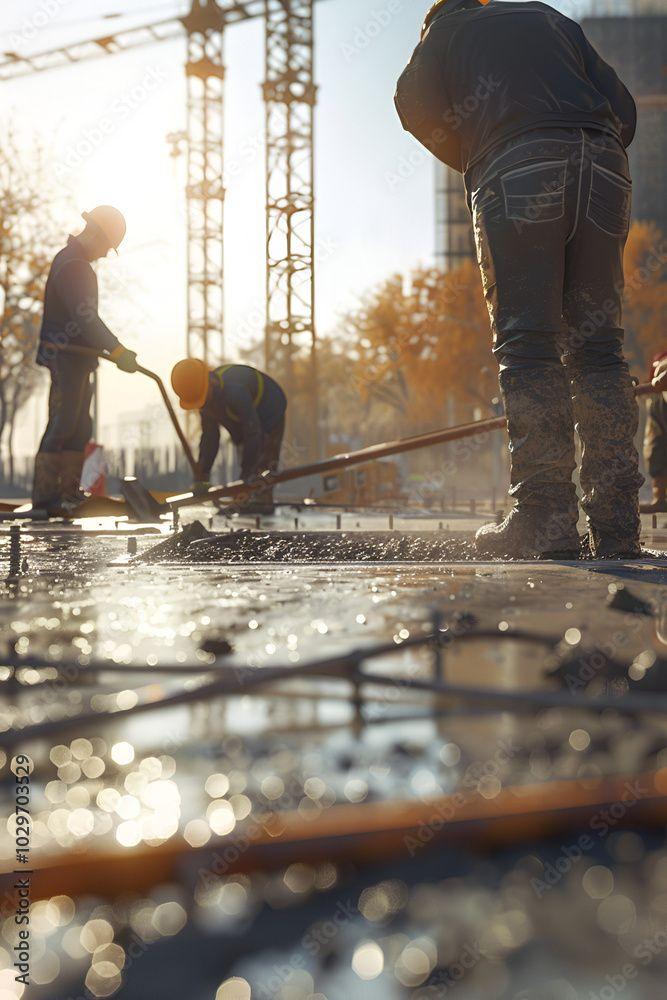Concrete is one of the most widely used building materials in the world, and for good reason. From sidewalks and driveways to skyscrapers and bridges, this material has proven its strength, adaptability, and reliability for thousands of years. If you live in Oakland or the surrounding areas, chances are you interact with concrete every single day—whether it’s the pavement you walk on, the patio in your backyard, or the foundations that hold up your home.
In this post, we’ll take a deep dive into what makes concrete such a remarkable material. We’ll explore its history, composition, benefits, common uses, and why it continues to be the backbone of modern construction.
A Brief History of Concrete
Concrete may feel like a modern invention, but its history stretches back to ancient civilizations. The Romans were famous for using concrete in their structures, many of which still stand today, like the Pantheon in Rome. Their blend of lime, volcanic ash, and water created an incredibly durable material that has inspired today’s concrete formulations.
Fast forward to the 19th century, and the invention of Portland cement gave birth to the concrete we know today. This cement, when mixed with aggregates like sand, gravel, or crushed stone, creates the strong and versatile concrete used worldwide.
What Is Concrete Made Of?
Concrete is essentially a mixture of three main components:
-
Cement – The binding agent, usually Portland cement.
-
Aggregates – Materials like gravel, sand, or crushed stone that provide bulk and strength.
-
Water – Initiates the chemical reaction known as hydration, which allows the mixture to harden and gain strength over time.
Additional admixtures can be added to improve workability, reduce curing time, or increase durability. This flexibility is one of the main reasons concrete remains the go-to material for so many construction projects.
Benefits of Concrete
Concrete is popular for several reasons, and these benefits highlight why it remains essential:
-
Durability – When properly installed and maintained, concrete structures can last for decades, even centuries.
-
Strength – Concrete can withstand heavy loads, making it ideal for foundations, roads, and high-rise buildings.
-
Versatility – Concrete can be molded into virtually any shape, offering limitless design possibilities.
-
Sustainability – Modern concrete mixes often incorporate recycled materials, reducing their environmental impact.
-
Cost-effectiveness – Compared to other materials, concrete offers a balance of affordability and longevity.
Common Uses of Concrete
Concrete is everywhere in Oakland and beyond. Here are some of its most common applications:
-
Foundations – The base of most residential and commercial structures relies on concrete for stability.
-
Driveways & Sidewalks – Durable, low-maintenance, and customizable for curb appeal.
-
Patios & Outdoor Living Areas – Stamped or stained concrete creates beautiful, functional spaces.
-
Retaining Walls – Both functional and decorative, concrete retaining walls control soil erosion and add to landscaping design.
-
Commercial & Industrial Structures – From parking garages to warehouses, concrete is the material of choice for large-scale builds.
Different Types of Concrete
Concrete is not “one-size-fits-all.” Depending on the project, different types of concrete may be used:
-
Plain Concrete – Basic mixture used for pavements and flooring.
-
Reinforced Concrete – Includes steel reinforcement for added strength.
-
Stamped Concrete – Designed with patterns and textures to mimic stone, brick, or tile.
-
High-Performance Concrete – Engineered for extreme strength and durability in demanding conditions.
-
Lightweight Concrete – Made with lighter aggregates, ideal for reducing structural load.
Each type of concrete has unique properties tailored to specific needs, which is why consulting professionals like Oakland Concrete ensures the right material is used for the job.
Concrete in Oakland: Why It Matters
In a city like Oakland, where modern design meets historic architecture, concrete plays a central role. It’s not just about strength and utility—it’s also about aesthetics and sustainability. Homeowners choose concrete driveways and patios for their beauty and low maintenance, while businesses rely on concrete for long-lasting infrastructure.
Oakland’s unique climate also makes concrete an excellent choice. Its resistance to weathering ensures structures can withstand both sun exposure and occasional rainy conditions.
Maintaining Concrete Structures
While concrete is durable, it isn’t completely maintenance-free. Here are a few tips to extend the life of your concrete surfaces:
-
Sealing – Applying a sealer helps protect concrete from moisture, stains, and weathering.
-
Cleaning – Regular sweeping and occasional power washing keep surfaces looking fresh.
-
Repairing Cracks – Addressing small cracks early prevents them from spreading and causing more serious damage.
-
Avoiding Harsh Chemicals – De-icing salts or strong acids can harm the surface over time.
By investing in simple maintenance, you can ensure your concrete structures remain strong and beautiful for years to come.
Final Thoughts
Concrete is more than just a construction material—it’s the foundation of modern life. Its durability, versatility, and affordability make it a favorite for homeowners, contractors, and architects alike. Whether you’re building a new driveway, designing a stylish patio, or planning a large commercial project, concrete provides endless possibilities.
At Oakland Concrete, we’re passionate about delivering high-quality concrete solutions tailored to your needs. From residential upgrades to commercial builds, our expertise ensures every project is built to last.

